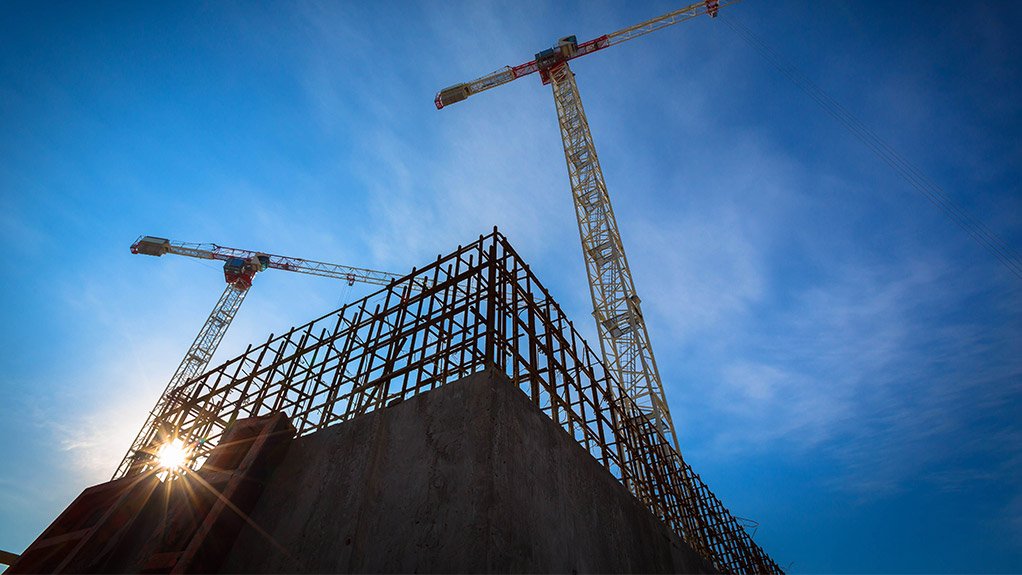Industry association the Concrete Manufacturers Association (CMA) is taking a proactive role in ensuring that a high level of quality is instituted and maintained throughout the civil engineering and construction sector’s supply chain.
CMA executive director Frans Minnaar notes that a country’s economy and its construction sector are intimately linked. “The depressed state of South Africa’s economy has had a direct influence on infrastructure spending in the country and the civil and construction industry has consequently been facing a very challenging time, with very little work available.”
While many players in the industry remain hopeful that things will improve, Minnaar points out that a key concern is the concentration of infrastructure development projects in the larger metros, such as Cape Town, Johannesburg and Durban, with very little work planned in outlying rural areas.
“A consequence of this is that larger, well-resourced construction companies can take advantage of opportunities that enable them to weather difficult times, while the smaller businesses are struggling.”
Amid these difficulties, the CMA has noted more precast concrete structures being used in construction projects as South African businesses strategise to weather challenging economic circumstances by improving efficiency and reducing costs.
Minnaar highlights that, in the past, it was common practice for concrete products to be manufactured on site using local labour. This, however, was a lengthy process that involved assembling moulds and waiting for raw materials to be delivered, often resulting in an inconsistent product.
In contrast, he stresses that precast products are manufactured by skilled workers under controlled conditions in a factory, allowing for the production of high-quality standardised products at a rate that can keep up with demand. “Using a finished product, thus, results in significant time savings on site. Manufacturers will also often have stock on hand, as they are continuously producing their products, eliminating delays in getting a project off the ground.”
Advancing technology has also enabled the precast manufacturing industry to diversify its product range and respond quickly to market needs. “These manufacturers have, thus, become more open to working with designers and engineers to produce custom-made concrete products, which has facilitated innovation in the construction industry.”
Minnaar hints that there are some exciting projects in the pipeline in South Africa that have been made possible by the use of hollow-core precast concrete slabs in particular.
Eliminating Quality Qualms
Minnaar says quality is a key issue that has arisen with the surge of interest in precast products in the construction sector.
He explains that, until now, the South African Bureau of Standards (SABS) has been the sole authority that assesses precast products in South Africa, granting approval for their use in the construction industry. However, many manufacturers are struggling to obtain certification for their products as a result of protracted administration in the SABS.
CMA marketing manager Henry Cockcroft highlights the dire consequences of this, noting that, in many instances, large orders for precast products have been lost because of delays in the granting of certification.
“These manufacturers have, thus, had to consider obtaining product approval from international bodies, which is a very expensive exercise . . . to offer an alternate option, the CMA is seeking to establish itself as an internationally accredited local certification body that is able to provide a stamp of approval for precast products.”
Minnaar highlights that the association has enlisted the help of international business consultancy EOH Legal Services to assist in appointing inspectors and system auditors who will evaluate the products, thus ensuring that they are objectively selected by an institution independent of the CMA and its members.
Cockcroft points out that the CMA will provide healthy competition for the SABS, noting that, if one body fails to perform adequately, manufacturers will have the option of acquiring the services of the other. “With good, streamlined approval processes, construction companies will be able to improve their efficiency while using good-quality concrete products. It all comes back to one thing: improved service delivery throughout the industry’s supply chain.”
Minnaar adds that another key element in improving service delivery is overseeing the quality of the installation of products on site. Furthering its endeavour to support and promote quality in the precast concrete industry, the CMA is also expanding its training schedule, offering workshops to upskill and improve the knowledge base of those who install precast products.
The association launched its first workshop last year, with great success, and will present several workshops this year as part of its skills development programme to improve competencies in areas such as paving and roof tiling, Cockcroft explains.
The CMA hopes that this will go some way towards improving the quality of work in an industry that remains largely unregulated.
“The CMA is taking a very hands-on approach to the problems facing the civil and construction sector. We hope that this will attract interest from government and the private sector, enabling the industry . . . to make positive strides,” he concludes.
Edited by: Zandile Mavuso
Creamer Media Senior Deputy Editor: Features
EMAIL THIS ARTICLE SAVE THIS ARTICLE
ARTICLE ENQUIRY
To subscribe email subscriptions@creamermedia.co.za or click here
To advertise email advertising@creamermedia.co.za or click here















